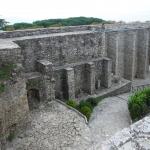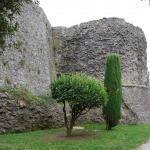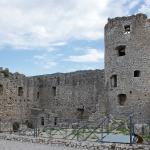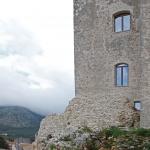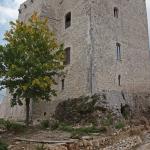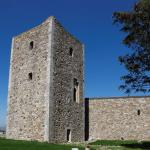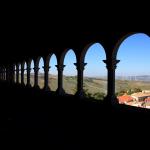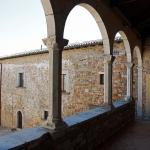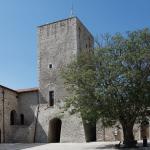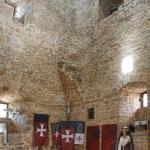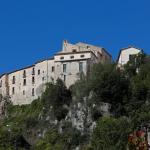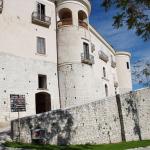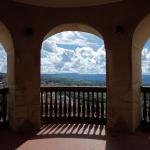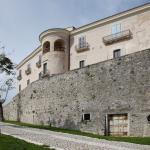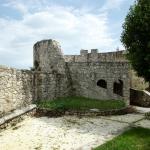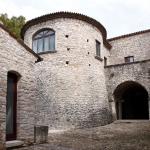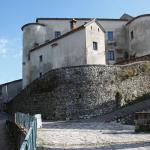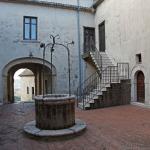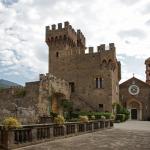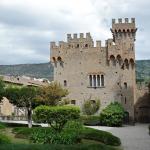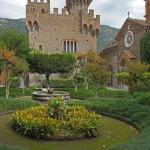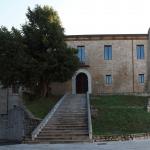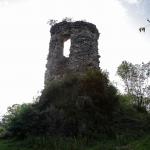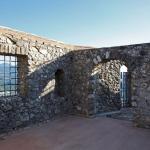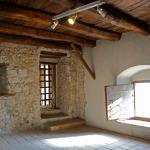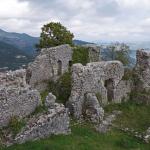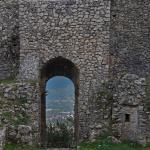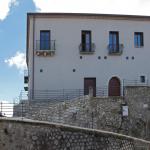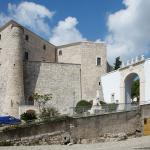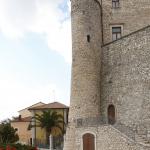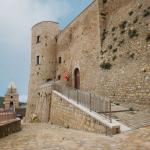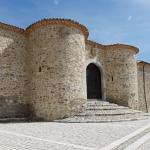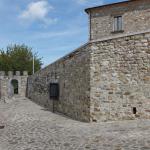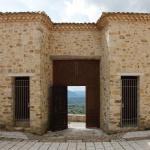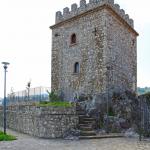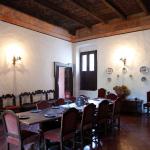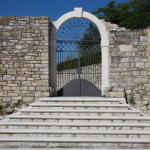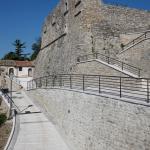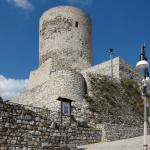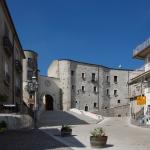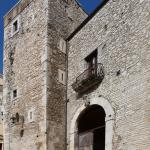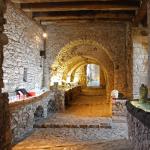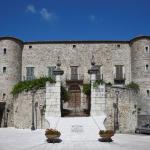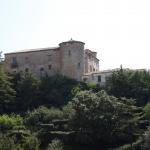I Castelli della provincia di Avellino
In una cornice naturale di grande suggestione, l’Irpinia, terra di Feudi, Principati e Baronie, ospita circa 70 tra fortezze e roccaforti soprattutto di epoca longobarda e normanna. Sopravvissuti a un tempestoso Medioevo, con il Rinascimento i Castelli dell’Irpinia videro iniziare la loro trasformazione in eleganti dimore signorili, segnando così la storia dei luoghi. Architetture secolari che raccontano di guerre e saccheggi, assedi e battaglie. Dalla roccaforte di Ariano Irpino, all’imponente Torre Normanna di Casalbore, passando per l’antico borgo fortificato di Quaglietta, fino ad arrivare alla dimora signorile di Taurasi, questi giganti di pietra delineano un itinerario tracciato lentamente da uomini di diverse epoche, protagonisti di gesta che ormai appartengono alla storia, rappresentando, oggi, un patrimonio inestimabile di architettura, storia arte e cultura che merita di essere conosciuto e valorizzato.
I castelli che proponiamo di visitare durante un soggiorno in Irpinia, secondo alcuni degli itinerari consigliati sono 28:
1. Castello Normanno di Ariano Irpino | Sistema Irpinia (provincia.avellino.it)
2. Castello di Avella | Sistema Irpinia (provincia.avellino.it)
3. Castello Cavaniglia: Il Castello di Bagnoli Irpino, ubicato sulla sommità del colle di 670 metri sul livello del mare, in posizione dominante nell'ambito dell'Alta Valle del Calore, fu fondato tra il VII e il IX secolo. Si presenta come un'imponente e robusta costituzione quadrangolare fondata sulla roccia calcarea della collina. Il castello fu la dimora di diverse famiglie nobili tra cui i d'Aquino, gli Sforza e i Palatucci. Furono però i Cavaniglia a lasciare l'impronta maggiore sul castello, come testimonia lo stesso nome. Bagnoli Irpino | Sistema Irpinia (provincia.avellino.it)
4. Castello ducale di Bisaccia | Sistema Irpinia (provincia.avellino.it)
5. Borgo e castello medievale di Quaglietta | Sistema Irpinia (provincia.avellino.it)
6. Castello e Torre Normanna di Casalbore | Sistema Irpinia (provincia.avellino.it)
7. Castello Longobardo: Il paese di Castelvetere sul Calore deve il suo nome proprio all'imponente maniero edificato in epoca longobarda su un'alta piattaforma rocciosa a 750 metri sul livello del mare. Le profonde modifiche effettuate nel tempo hanno mutato l'aspetto originario del castello, trasformandolo da fortezza in nobile dimora signorile. L'edificio attuale, a pianta rettangolare, presenta due piani superiori, e diverse sue parti sono state inglobate all'interno di edifici civili e religiosi. Castelvetere sul Calore | Sistema Irpinia (provincia.avellino.it)
8. Castello di Gesualdo | Sistema Irpinia (provincia.avellino.it)
9. Castello d'Aquino | Sistema Irpinia (provincia.avellino.it)
10. Castello Macedonio | Sistema Irpinia (provincia.avellino.it)
11. Castello Lancellotti | Sistema Irpinia (provincia.avellino.it)
12. Castello di San Barbato | Sistema Irpinia (provincia.avellino.it)
13. Ruderi del Castello di Monteforte Irpino | Sistema Irpinia (provincia.avellino.it)
14. Castello Caracciolo | Sistema Irpinia (provincia.avellino.it)
15. Castello-Carcere Borbonico di Montefusco | Sistema Irpinia (provincia.avellino.it)
16. Castello del Monte | Sistema Irpinia (provincia.avellino.it)
17. Castello di Montemarano | Sistema Irpinia (provincia.avellino.it)
18. Castello della Leonessa | Sistema Irpinia (provincia.avellino.it)
19. Castello baronale (Principi Grimaldi) | Sistema Irpinia (provincia.avellino.it)
20. Castelli | Sistema Irpinia (provincia.avellino.it)
21. Torre Aragonese | Sistema Irpinia (provincia.avellino.it)
22. Castello di Rocca San Felice | Sistema Irpinia (provincia.avellino.it)
23. Castello Pignatelli Della Leonessa | Sistema Irpinia (provincia.avellino.it)
24. Castello dei Guevara | Sistema Irpinia (provincia.avellino.it)
25. Torre Angioina: Il Castrum Submontis, fondato tra l'XI e il XII secolo, costituiva uno dei punti difensivi più avanzati della contea avellinese. Nel 1134 fu preso e distrutto da Ruggiero II che dopo averlo ricostruito nelle forme di un balium (recinto fortificato) lo fece amministrare da Raone Malerba. Quando nella prima metà del 1300 Summonte passò alla famiglia della Leonessa, il fortilizio, ritenuto poco affidabile, fu trasformato in una torre d'avvistamento di confine e ne fu alterata sia la distribuzione interna, sia la configurazione d'insieme. Summonte | Sistema Irpinia (provincia.avellino.it),
26. Castello Marchionale | Sistema Irpinia (provincia.avellino.it)
27. Castello Ruspoli-Candriano | Sistema Irpinia (provincia.avellino.it)
28. Castello dei Susanna | Sistema Irpinia (provincia.avellino.it)
Ecco alcuni degli itinerari proposti:
PERCORSO 1
GIORNO 1
Avellino, Manocalzati, Castelvetere sul Calore, Montemarano, Montella, Bagnoli Irpino. (1h,7min)
GIORNO 2
Bagnoli Irpino, Torella dei Lombardi, Rocca San Felice, Bisaccia, Monteverde (1h,48min)
GIORNO 3
Monteverde, Bisaccia, Morra de Sanctis, Quaglietta (1h,42min)
PERCORSO 2
GIORNO 1
Grottaminarda, Ariano Irpino, Zungoli, Savignano Irpino, Casalbore. (1h,36min)
GIORNO 2
Grottaminarda, Gesualdo, Taurasi, Montemiletto, Manocalzati, Avellino. (1h,32min)
PERCORSO 3
GIORNO 1
Avellino, Montefredane, Grottolella, Summonte, San Martino Valle Gaudina. (1h.)
PERCORSO 4
GIORNO 1
Avella, Lauro, Monteforte Irpino, Manocalzati, Montefusco, Pietradefusi. (1h,38min)
Itinerary
Castello Normanno di Ariano Irpino
A significant example of the presence of northern populations in Irpinia, known for its impenetrability, the Norman Castle of Ariano Irpino has preserved its medieval charm to this day, allowing visitors to admire the extensive and enchanting views of the surrounding landscape
Castello di Avella
A fairytale destination located among unspoiled nature, the Castle is a place of great cultural interest and "locus amoenus"
Bagnoli Irpino
A village in the Picentini Mountains Regional Park surrounded by mountains that exceed 1,700 meters above sea level, an enchanted natural landscape, the pride of the Irpinia territory and a renowned tourist destination
Castello ducale di Bisaccia
A splendid bastion that served to protect the territory from enemy attacks, which later became a noble residence. A beautiful panorama can be enjoyed from its loggia and an Archaeological Museum is housed in its rooms
Borgo e castello medievale di Quaglietta
A sign of age-old charm, unchanged over time, the medieval village of Quaglietta is an important historical example of Lombard domination in Irpinia: with its castle and its Albergo Diffuso hotel, it offers unique sensations in a magical, fairy-tale environment
Castello e Torre Normanna di Casalbore
A defensive structure in Gothic style, the Castle surrounds the Norman Tower, dating from the 12th century, which is located at the highest point in Casalbore
Castelvetere sul Calore
Authentic village with an extraordinary panoramic view that includes 28 other villages, located in a unique and valuable urban context. It's the homeland of the culture of hospitality, that welcomes all those wishing to admire this suggestive corner of Irpinia
Castello di Gesualdo
One of the most important monuments in Irpinia and Campania, it was the home of Prince Carlo Gesualdo, one of the fathers of modern polyphonic music
Castello d'Aquino
Dating from the early Middle Ages, the ancient fortress still retains its former splendour and dominates the middle Ufita Valley from its elevated position
Castello Macedonio
Also known as Carafa Castle, this Lombard fortress was built to defend the village and became the seat of the Macedonio and Caracciolo families.
Castello Lancellotti
One of the most evocative historic residences in Campania, on the "first stone" of the Vallo di Lauro
Castello di San Barbato
As one of the most beautiful noble homes in Irpinia, the Castle of San Barbato is tied to the village of the same name, which until the second half of the 19th century was an independent municipality. Even today, the Castle is the dominant feature of the town of Manocalzati and the whole of the Sabato Valley.
Ruderi del Castello di Monteforte Irpino
From the top of the hill on which it stood, the Castle dominated the valley below. It was built on an ancient Roman castrum, probably by the Lombards. The ruins of the concentric stone walls can still be seen today.
Castello Caracciolo
Standing in a strategic position overlooking the entire valley, the Castle offers spectacular views. The building dates back to the 10th century and its ruins testify to its ancient splendour.
Castello-Carcere Borbonico di Montefusco
Built in the Norman period, the Castle was adapted for use as a prison during the Aragonese domination. It was also dubbed “Italy’s Spielberg” due to the extremely harsh treatment of prisoners.
Castello del Monte
Once a Roman hill fort and then a Lombard castle, the building was restored a few years ago. Archaeological digs inside the walls have brought to light a necropolis and grave goods.
Castello di Montemarano
A mediaeval castle that dominates the town from its highest point.
Castello della Leonessa
Standing in a dominant position overlooking the valley traversed by the Calore and Sabato rivers, Della Leonessa Castle of Montemiletto is a splendid building, converted into a noble residence by the Tocco family. It is also known for having hosted King Charles III of Bourbon.
Castello baronale (Principi Grimaldi)
Built by the Lombards to defend the borders of the Duchy of Benevento, its elevated position offers an impressive view of the valleys below
Castello dei Principi Biondi Morra
A splendid building, constructed during the Lombard period and later converted into a noble residence, the Biondi Morra Castle still retains some of the fine details that indicate its original defensive purpose and make it into a historic and cultural symbol for the local community.
Torre Aragonese
Built in 1431 by Giacomo de Tocco, the Tower stands at the highest point of the town. All that remains of the original structure are the foundations, which stand on the bare rock.
Castello di Rocca San Felice
Particularly magnificent, it stands at 750 meters above sea level and the main fortress, the end point of the fortified area, is clearly visible
Castello Pignatelli Della Leonessa
Built in the first half of the 9th century as a defensive fortress, then transformed into a noble residence, the Pignatelli Della Leonessa Castle still retains its original appearance of a medieval manor, embellished by frescoes and vaults decorated with friezes and coats of arms
Castello dei Guevara
Built between the 7th and 8th centuries, it once dominated the Cervaro Valley
Summonte
One of the most beautiful villages in Italy, located at the foot of Mount Vallatrone and completely surrounded by mountains full of springs, which dominates the whole area of Partenio and which offers itself with its trekking routes and suggestive panoramic views
Castello Marchionale
A splendid and well-preserved historic building that has been altered many times over the centuries, although the original structure probably dates from the Lombard era.
Castello Ruspoli-Candriano
A historic hill fort skilfully rebuilt after the 1980 earthquake, the Castle of Ruspoli-Candriano is still noted today for its imposing cylindrical donjon. Now the seat of the municipal offices, it houses a museum, restaurant, the local tourist office and an exhibition dedicated to Sergio Leone.
Did you like it? Leave a review
Your opinion is important! It will be visible after approval by the editorial staff.
To post a comment you must be an authenticated user. Log in with Social Login

